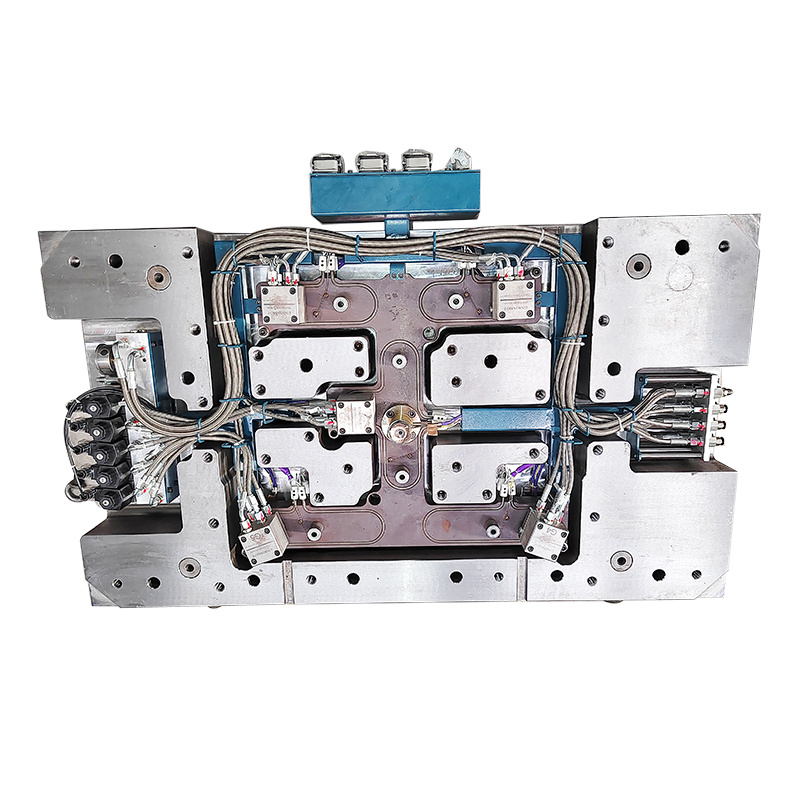|
Mold design and injection molding processing GuideMold design and injection molding processing Guide Construction material The appropriate die steel shall be selected according to the application requirements. In the case of prototype fabrication, hardened die steel is not required. In most cases, pre hardened steel or aluminum is usually used to reduce costs and facilitate mold adjustment during the prototyping stage. These soft metals can also mold enough test pieces and prefabricated parts. Pre hardened die steel (such as P-20 or nakr-55) is often used to make large-scale dies because it is impractical to harden die steel in large applications. In the case of high output, hardened die steel needs to be used for the core and cavity. S-7, H-13 and stainless steel 420 are the most commonly used steels. S-7 is an excellent die steel, which can be used for production and operation for a long time. If high melt and die temperatures are required, H-13 steel should be selected. H-13 can also be used to make hot runner manifold. The tempering temperature of H-13 is very high, which can withstand high die processing temperature without affecting the hardness. If the application field puts forward high requirements for wear resistance, or a large amount of condensation will occur in the environment, stainless steel is the best choice for die steel. A2, asp23 or D-2 steel can be used to make cavity inserts with high wear resistance. Surface finish Depending on the aesthetic requirements, customer needs and functions of the parts, the surface of the formed parts may be different. From SPI #1 mirror like high gloss surface to textured surface obtained by etching technology, LNP composites can have almost any type of surface finish of formed parts. It is important to understand that some materials have improved performance after having a certain die surface finish. For example, the demoulding property of polypropylene in matte surface mold is significantly better than that in high gloss surface mold. It is difficult to achieve high gloss in a resin with a large amount of filling. Exhaust In order to maximize the mold performance, exhaust is an important part of the molding cycle. When the thermoplastic material enters the mold cavity, the air in the mold cavity needs to be discharged. Vent holes are usually located at the last filled part, near the suture and on the runner system. Additional exhaust holes distributed around the parting line can greatly improve the overall exhaust performance. The residual gas in the mold is shown as coke marks on the formed parts. The basic experience is that the gas in the mold must be able to be discharged at the same rate as the plastic enters the mold cavity. The pore depth varies with the materials used. Generally, amorphous thermoplastic materials require a large pore depth due to their high viscosity. Single cavity and multi cavity There are three basic types of molds that are most commonly used in industry, especially those using LNP composites.
Hot runner Full hot runner molds or "no runner" molds have many advantages, but they must be carefully designed to ensure proper control of the melt flowing into the mold cavity. Although runner less molds produce almost no waste in the molding operation, they are prone to problems during start-up, especially molds using semi crystalline LNP composites, which are easy to cold solidify quickly. The principles to be observed include: • use only well-balanced hot runner manifold systems designed specifically for the application. • according to the different materials used, the hot runner can be designed to be poured directly onto the components with the open gate base plate, or the valve gate can be used for residue free molding, or the gate can be opened on the small surface runner. • the heated runner path and hot base plate should provide a flow path that can smoothly enter the mold cavity and be heated externally. • when using long glass fiber reinforced resin, gate residue is inevitable. • a complete system from one hot runner manufacturer should be used instead of using different components from different manufacturers. • gate size depends on the amount and type of material added, component size / ratio and wall thickness. |





